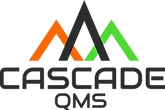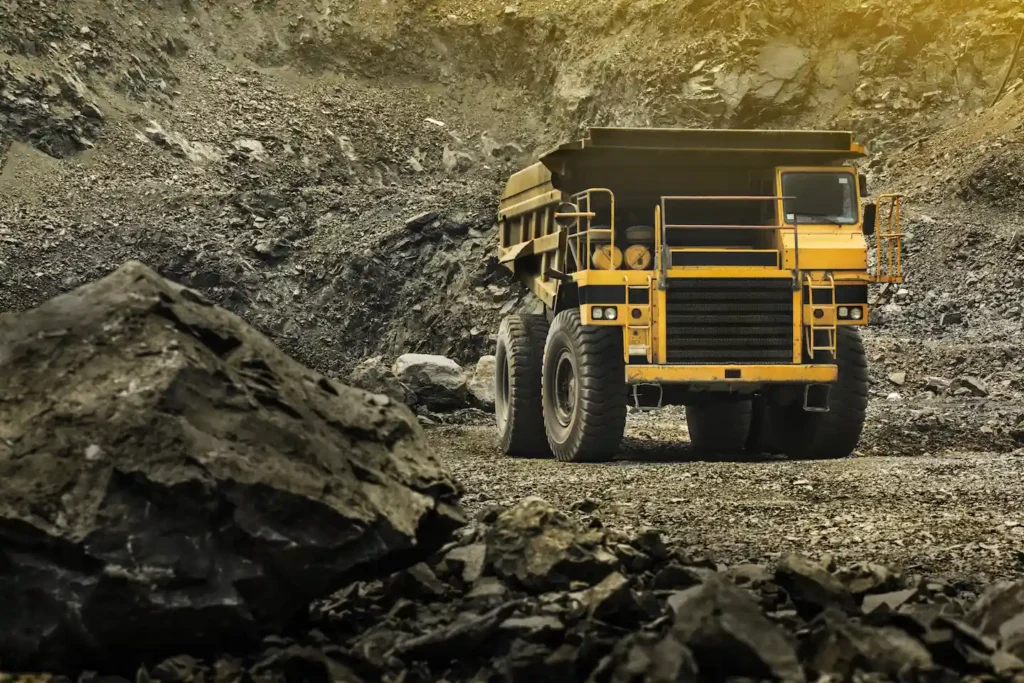Mining safety is a top priority for the Mine Safety and Health Administration (MSHA). MSHA is the federal agency responsible for ensuring safe and healthy working conditions for all employees in the mining industry. Dissecting MSHA’s requirements can be incredibly overwhelming. However, understanding and complying with these regulations is not only a legal obligation but also a critical step in protecting your workers and building a successful operation.
We’ve compiled a list of frequently asked questions and topics we commonly address with our MSHA clients. We hope this helps to shed light on MSHA’s rules, training requirements, and best practices for maintaining compliance, so you can focus on growing your business with confidence.
1. What is MSHA?
The Mine Safety and Health Administration (MSHA) is part of the U.S. Department of Labor and oversees the implementation and enforcement of safety and health standards for mining operations nationwide. MSHA was established to reduce accidents, injuries, and fatalities in the mining industry, a historically high-risk sector.
How is MSHA Funded?
MSHA is federally funded through taxpayer dollars. The agency uses these funds to conduct inspections, provide training resources, and enforce compliance across mining operations in the United States.
2. Understanding Part 46 and Part 48
MSHA training regulations are divided into two main categories, depending on the type of mining operation:
- Part 46:
-
- Applies to surface mining operations, such as sand, gravel, limestone, and marble quarries.
-
- Covers activities at surface mines including maintenance, haulage, and work on associated equipment.
-
- Training includes New Miner Training (24 hours), Annual Refresher Training (8 hours), and Task-Specific Training.
- Part 48:
-
- Governs training for underground mines and some surface mines associated with underground operations.
-
- Requires more extensive training, with specific requirements for both miners and trainers.
Understanding whether your operations fall under Part 46 or Part 48 is a critical first step in achieving compliance.
3. Who Needs Training and What Training is Required?
Who Needs Training?
Anyone who works on or near a mine site must undergo MSHA training. This includes:
- Miners (full-time or part-time employees)
- Contractors and subcontractors
- Supervisors and foremen
- Maintenance and support staff working on mine-related equipment
What Training is Required?
- New Miner Training: Covers the basics of mine safety, hazard recognition, and emergency response. This is required for workers with no prior mining experience.
- Annual Refresher Training: A mandatory 8-hour session to ensure workers stay updated on safety practices and regulations.
- Task-Specific Training: Tailored to specific job functions, such as operating machinery or handling hazardous materials.
- Site-Specific Hazard Training: Addresses unique risks associated with a particular mine site.
All training must be documented and readily available for MSHA review.
4. Key MSHA Rules to Follow on the Jobsite
Pre-Shift Inspections
Before starting any shift, pre-shift inspections must be conducted to ensure:
- Equipment is functioning properly.
- The work environment is free from hazards like unstable ground or gas buildup.
- Emergency systems, such as alarms, are operational.
Personal Protective Equipment (PPE)
- Workers must wear appropriate PPE at all times, including hard hats, safety glasses, gloves, steel-toe boots, and respiratory protection as required.
- Employers are responsible for providing and keeping PPE in good working condition.
Tie-Off Requirements
- Workers operating at heights must use fall protection systems and strictly adhere to tie-off rules. These rules are absolutely non-negotiable to prevent fall-related injuries on MSHA jobsites.
Citations and Penalties
- MSHA inspectors can issue citations for non-compliance, ranging from minor violations to severe infractions. Penalties can include fines, mandatory shutdowns, or even criminal charges for egregious violations.
5. MSHA Forms 7001 and 7002
Form 7001: Accident/Illness Reporting
- Must be completed within 10 days of any reportable incident, including:
- Workplace injuries requiring medical attention.
- Fatalities or illnesses caused by mining operations.
- Equipment damage exceeding $5,000.
- Accurate and timely submission is critical to avoid additional penalties.
Form 7002: Quarterly Mine and Employee Reporting
- Used to report the number of hours worked and the number of employees active on mine sites during each quarter.
- Form 7002 helps MSHA track activity levels and ensure accurate compliance monitoring.
6. Becoming an MSHA Contractor
To legally perform work on a mine site, businesses must register as MSHA contractors. The process includes:
- Obtaining a Contractor ID from MSHA by submitting a registration form.
- Developing and maintaining a compliant training program under Part 46 or Part 48.
- Keeping detailed records of employee training, hours worked, and job site activities.
- Regularly submitting required forms, including Forms 7001 and 7002.
7. Tracking Hours and Reporting
The number of MSHA hours and employees on site should be reported accurately and frequently. Reporting hours is essential for your MSHA compliance. Tips for managing this include:
- There are many digital time-tracking tools in existence to record hours worked in real-time.
- Consolidating records into quarterly reports to streamline Form 7002 submissions.
- Assigning a compliance officer or administrator to oversee reporting tasks and ensure deadlines are met.
8. What to Know About MSHA Inspectors
MSHA Inspector Role
MSHA inspectors have varying levels of authority when visiting your jobsite. It’s important for contractors to be educated on their role in your compliance. Inspectors perform the following:
- Conduct inspections to assess compliance unannounced.
- Review training records, employee certifications, and site conditions.
- Investigate accidents or violations and issue citations as needed.
Preparing for Inspections
- Be sure to maintain organized and up-to-date documentation.
- Contractors should make it a regular practice to have internal audits to identify and address potential compliance gaps.
- Make sure all employees are trained to identify MSHA inspectors. They should also be able to communicate professionally with the MSHA inspectors when they visit jobsites.
9. Common Causes of MSHA Violations
Violations often stem from:
- Incomplete Training Records: Failing to document or provide proof of required training.
- Improper PPE Usage: Workers not wearing or using PPE correctly.
- Equipment Hazards: Poor maintenance or failure to conduct pre-shift inspections.
- Unsafe Practices: Ignoring tie-off requirements or mishandling hazardous materials.
10. What to Do if You Have a Violation:
MSHA Citations can be overwhelming when first received. You’re likely to have questions and want to correct the violation quickly. Here are a few ways to address your MSHA violation:
- Act Immediately: Address the issue cited by the inspector as soon as possible.
- Consult Experts: Work with an MSHA trainer or compliance consultant to implement corrective actions.
- File an Appeal: If you believe the citation was issued in error, file an appeal through MSHA’s established process.
11. What are MSHA Trainers?
MSHA trainers are certified professionals who:
- Develop and deliver compliant training programs under Part 46 and Part 48.
- Provide site-specific training tailored to unique hazards and job requirements.
- Help businesses maintain accurate training records and prepare for inspections.
At Cascade QMS, we’ve partnered with amazing MSHA-certified trainers with years of expertise. Cascade QMS helps businesses of all sizes meet MSHA training and documentation requirements, ensuring a smooth path to compliance.
12.MSHA Written Programs
Any MSHA contractor must have and use written safety programs that address their specific MSHA related operational risks and regulatory requirements. It’s best practice to develop a training plan (detailing required sessions under Part 46 or Part 48), a hazard communication program (to manage and inform about hazardous chemicals), and an emergency response plan (outlining procedures for accidents or emergencies). Each written safety program must be documented, implemented, and updated regularly to ensure worker safety and regulatory compliance. Cascade QMS can help customize your needed programs here.
Some of the most commonly used written programs are:
- MSHA Training Plan (Part 46 or Part 48)
- Hazard Communication (HazCom) Program
- Emergency Response Plan (ERP)
- Personal Protective Equipment (PPE) Program
- Equipment Maintenance and Inspection Program
- Respiratory Protection Program
- Fall Protection Plan
- Powered Haulage Safety Program
- Noise Exposure and Hearing Conservation Program
- Accident and Incident Reporting Procedures
MSHA Client Compliance
Many systems and corporations frequently access MSHA’s website to confirm contractor statistics to identify potential risks. Large corporations such as Martin Marietta Materials, Mosaic, Calumet, Cleveland-Cliffs and Consol Energy rely on their contractors’ accurate MSHA reporting and have strict compliance requirements. Prequalification systems such as Veriforce and ISNetworld also require frequent reporting and cross reference MSHA’s database for accuracy.
Simplify Your MSHA Compliance with Cascade QMS
MSHA regulations and requirements can be overwhelming when first exposed. Businesses that prioritize understanding training requirements, adhering to job site rules, and maintaining accurate records not only thrive, but also avoid costly penalties.
At Cascade QMS, we’re committed to helping businesses like yours understand MSHA compliance. Our team of incredible consultants provide the resources and expertise you need to succeed from training to tracking. We’ll help you develop a plan to adhere to MSHA guidelines in an efficient manner that works best for you!
Ready to simplify MSHA compliance for your business? Contact Cascade QMS today to learn how we can support your training, reporting, and safety needs. Visit or call us to get started!


